Sheep farming is an agricultural process of raising sheep in open fields. The animals are kept together in groups and sheared once a year to remove their wool. Other operations that may be done on the farm include milk production, brearing, and selling lamb or mutton.
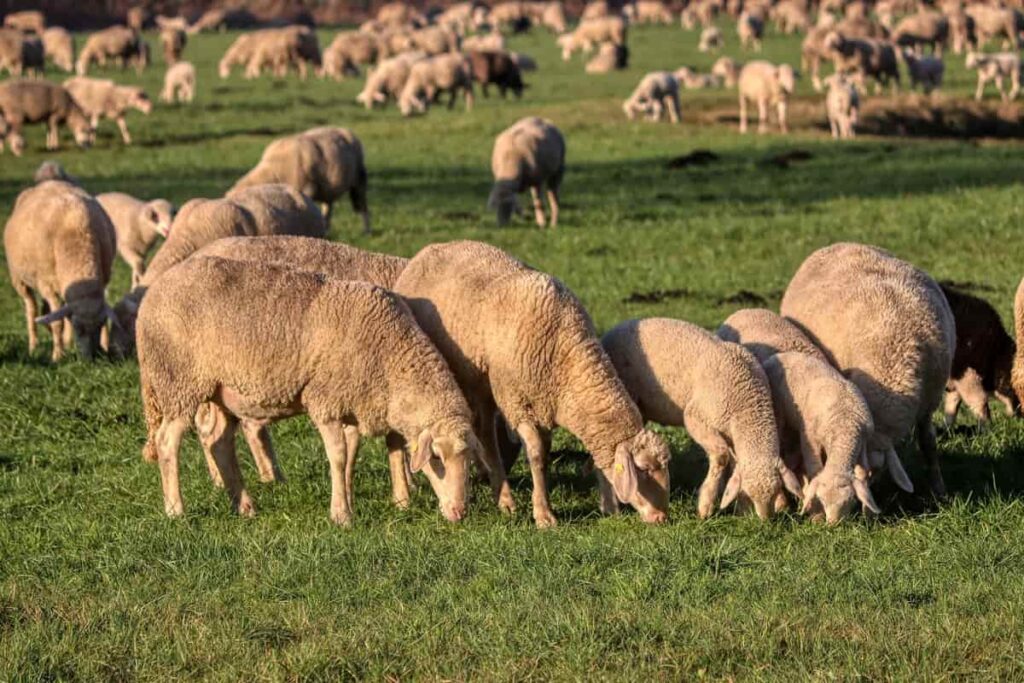
Sheep farmers in Kenya use several methods to keep their sheep healthy and happy. These include feeding them hay, corn, and other fresh foods; providing them with water; and keeping them warm by using firewood or electric fences to keep them from straying too far from the farm buildings.
Sheep farming in Kenya
Is sheep farming profitable in Kenya?
- The country has a long history of sheep farming, and the industry continues to grow today. Sheep farming is a valuable source of income for many Kenyans and plays an important role in the country’s economy.
- If you have proper facilities, you can raise sheep on both a small and large scale. Commercial sheep farming is very profitable, and you will get your investment back quickly.
- Sheep farming profitability in Kenya depends on several factors, including the type of sheep you raise, the climate in which you are located, and the market conditions.
- Sheep farming can be very profitable in Kenya if you raise Merino wool sheep. In addition, they can adapt well to various climates, making them ideal for farmers in areas with varied climates.
- However, profits may not be as high if you raise other types of sheep. Additionally, sheep farming involves significant risk, so it is important to have good estimating and planning skills to enter this business. Overall, though there may be potential for profitability with Sheep farming in Kenya depending on the specific factors involved, it is always best to consult with an experienced professional before making any decisions.
Zero grazing sheep farming in Kenya
Zero-grazing sheep farming in Kenya is a new and unique approach to sheep farming that has been gaining popularity in recent years. The idea behind zero-grazing sheep farming is to keep the sheep constantly moving, so they don’t convert grasslands into their pasture. In addition, this method is more sustainable than traditional grazing because it doesn’t rely on artificial feed supplements or fencing.
The benefits of zero-grazing sheep farming in Kenya include improved soil quality, increased production levels, and reduced greenhouse gas emissions. In addition, this type of farming is said to be easier and less expensive to manage than traditional grazing systems.
In case you missed it: Sheep Farming in Philippines: How to Start, Breeds, Production, and Management
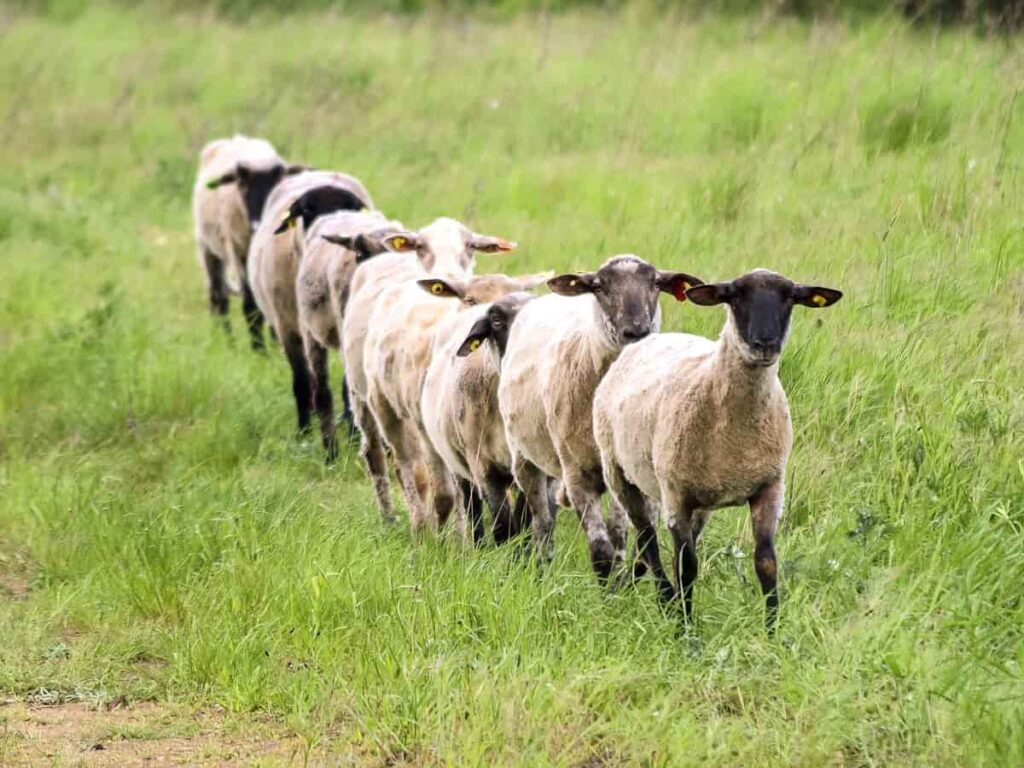
Sheep farming for beginners in Kenya
- Sheep farming is a great way to improve the livelihoods of farmers in Kenya. The main livestock product from sheep farming is lamb, which can be sold fresh or frozen. Sheep are also good for wool production, and their manure can be used as fertilizer for crops. Feeding sheep is an important part of sheep farming in Kenya. Sheep need to eat a lot of hay, fresh vegetables, and other nutritional supplements to stay healthy. Farmers usually feed their sheep twice a day, morning and evening.
- Sheep farmers in Kenya usually feed their sheep hay, fresh vegetables, and other nutritional supplements. Hay is the most important aspect of sheep farming because it helps keep the sheep healthy and fed. Fresh vegetables are also essential for the health of the sheep because they help them get enough vitamins and minerals. Farmers usually give their sheep a mix of vegetables to ensure they get the essential nutrients.
- To start sheep farming in Kenya, you will need to acquire a permit from the government. Once you have your permit, you must purchase a ram and some ewes (female lambs). You will also need to buy some feed and hay and construct a shelter for the sheep.
- Once you have acquired all the necessary equipment, it’s time to start. Firstly, divide the pasture into small patches and give each lamb its section. Then, feed the rams hay daily, so they are well-nourished and healthy.
- Once the rams are fully grown, it’s time to breed them. Firstly, you will need to take them to a nearby farm where they will be castrated (sterilized). Afterward, you will return them to your farm, where they can continue producing lambs.
Feeding management for sheep farming in Kenya
Sheep farming in Kenya is a sustainable and profitable industry that relies on the controlled grazing of sheep. The animals are fed hay, straw, and other vegetation to provide them with the necessary sustenance while grazing. The farmers also cultivate crops near their flock to supplement their diet and create a healthy animal environment. Feeding your sheep is an important part of their care and well-being. When feeding your flock, consider the following tips:
- First, determine how much hay your sheep will need each day. This will depend on their size, weight, and weather conditions. You can calculate this by using a hay weighing scale or measuring tape.
- Next, ensure you have enough fresh water for them to drink. Sheep need about one gallon of water per day. If you live in a dry region, provide additional water sources such as rain barrels or cisterns.
- You should also provide your sheep with a balanced diet with hay, fresh vegetables and fruit, and minerals such as salt. A good feed mix for sheep includes 50% hay, 35% fresh vegetables and fruit, and 15% minerals. Check with your area’s regional agricultural extension office for specific feeding recommendations.
- Finally, be careful when loading your sheep into trailers or trucks to transport them to their pasture or wool shed. Ensure they are properly weighed first, so they don’t get overloaded.
Sheep rearing operations in Kenya
There are many sheep farming operations in Kenya, but most are located in the central and eastern regions. The main reasons for this are the relative abundance of grass and water in these areas, as well as the fact that there is a high population density. The climate in Kenya is generally temperate, with rainfall occurring throughout the year.
In case you missed it: How to Make Corn Silage: Production and Management Steps for Goats, Sheep, Cows, Pigs, and Cattle
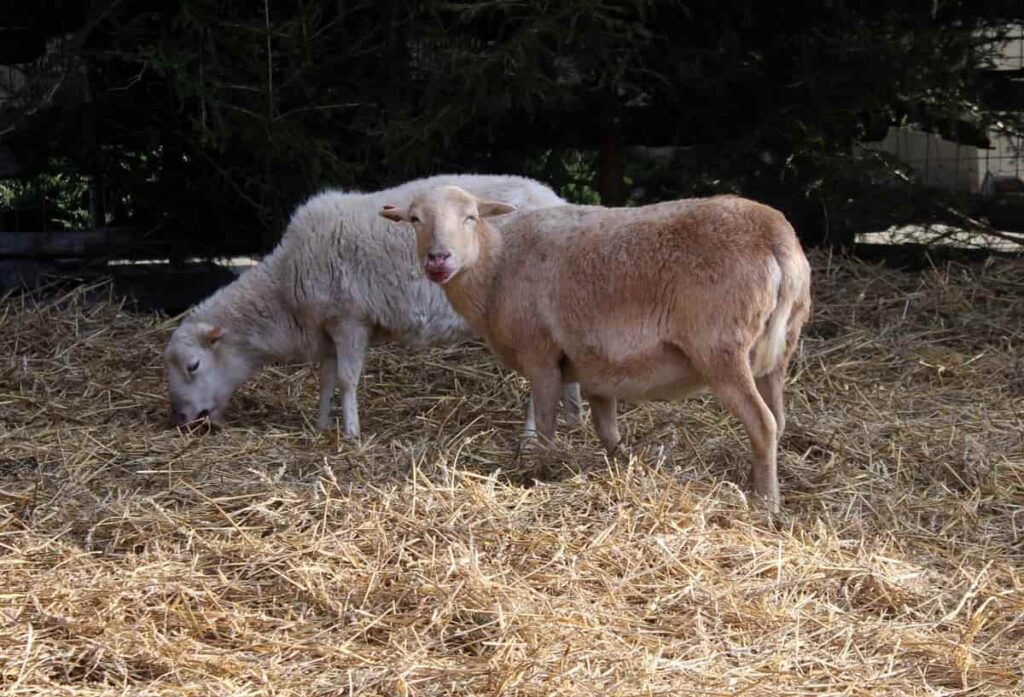
However, there are two rainy seasons, one from mid-July to mid-August and the other from late December to early January. Sheep farming in Kenya is very diverse due to the wide range of altitudes at which sheep can be raised. In addition, several different breeds of sheep can be found in Kenya.
Small-scale sheep farming in Kenya
Small-scale sheep farming is a popular agricultural activity in Kenya. There are several reasons for this. First, sheep are well-suited to the climatic conditions in Kenya. Second, there is a large potential market for lambs and wool in Kenya. Finally, small-scale farmers can easily control flocks and optimize production using traditional methods. There are several ways to start a small-scale sheep farm in Kenya.
The most common method is to purchase an existing farm. Alternatively, you can lease land from someone who farms sheep. Finally, you can start your farm by purchasing land and leasing it to a shepherd. Sheep farming is an environmentally sensitive activity that requires careful planning. You will need to consider the location of your farm, the type of soil available, and the climate conditions.
You will also need to build fences and barns, install water tanks and shelters for your animals, and cultivate crops to feed your livestock. If you are planning to start a small-scale sheep farm in Kenya, be prepared to invest time and money to succeed. However, this type of agriculture is rewarding because it allows you to produce fresh food products that are essential for the local population.
Commercial sheep farming in Kenya
Large-scale sheep farming in Kenya is a significant sector, contributing to the country’s economy and export earnings. The industry has been growing steadily, aided by rising income levels and increasing demand for wool products. Commercial sheep farming is a high-value crop because of its wool content. Sheep also provide milk, which is valuable for cheese production. Additionally, lamb is a popular meat product in Kenya.
Sheep farming in Kenya is done on a large scale. The number of sheep raised per hectare ranges from 50 to 500 animals. The average flock size is around 200 animals. Sheep are fed hay, fresh green grass, and corn mash during winter. They are given hay, grain, and salt licks in the summer. Shepherds use fences to keep the sheep contained, so they do not damage crops or other property.
In case you missed it: How to Start Goat and Sheep Farming in United Arab Emirates (UAE): A Stall Feed Guide for Beginners
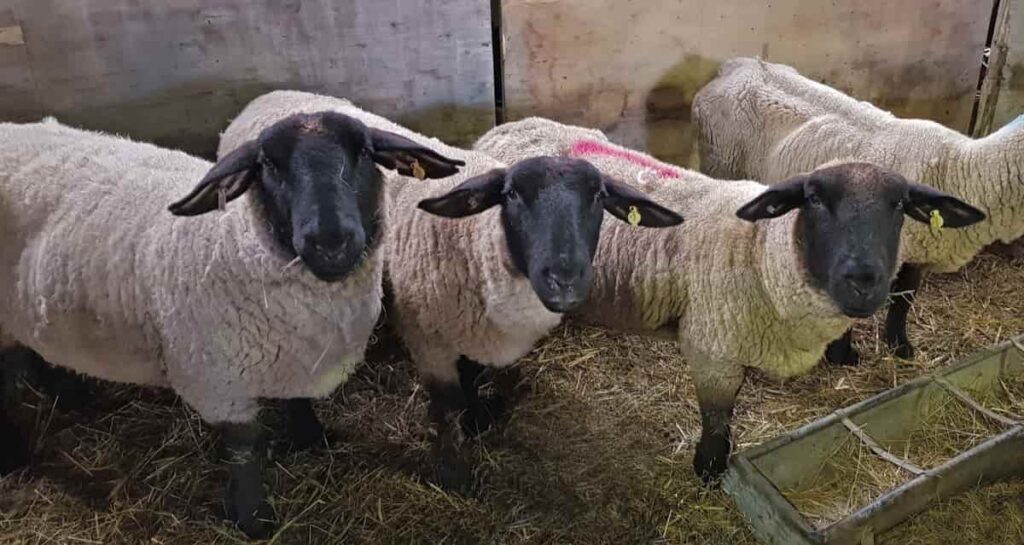
Sheep rearing business tips in Kenya
There are many sheep farming businesses in Kenya, but choosing the right one is important. Below are some tips to help you get started:
1. Get a good land lease – The most important factor in starting a sheep farming business is finding good land to lease. Make sure the land is well-drained and has enough freshwater sources. You’ll also need to negotiate a good lease agreement with the owner.
2. Get started early – The earlier you start your sheep farming business, the better your chance of success. Plan your investment carefully, and ensure you have all the necessary equipment before investing in this venture.
3. Choose a breed of sheep that best suits your climate and location – There are many different breeds of sheep, and each has unique characteristics and traits. Consider the climate where you plan to farm, as well as the type of soil and vegetation it is available. Choose a breed that will be able to survive in your environment
Sheep farming areas in Kenya
Kenya is located in Eastern Africa on the equator. It has a total area of 193,912 square km and a population of over 47 million people. The climate in Kenya is humid tropical with four seasons: wet season, dry season, monsoon season, and winter. Kenya has three main geographic regions: Western, Central, and Eastern.
- The Western region consists of the Lamu and Mombasa coastal counties that border Somalia.
- The Central region includes Nyanza province, the capital city of Nairobi, and Rift Valley province, which includes the major towns of Kisumu and Eldoret.
- The Eastern region consists of the Coastal areas including Lamu, Mombasa, Diani Beach, Tana River District (included Wajir County), Garissa County (included Garissa Town), Turkana County (included Borana Town), Nakuru County and Kitui County (included Kitui Town).
The main sheep farming areas in Kenya are Lamu Island, where there are many rangelands for goats as well as sheep; Isiolo, where there are large expanses of agricultural land suitable for growing maize or other crops alongside sheep; Nyanza Province, where there is ample pastureland for both sheep and goats.
Eastern Province where there is good wetland grazing potential across districts like Machakos, Kiambu, Bungoma, and Migori; Embu Hills. However, from Narok to Kajiado, Makueni, Machakos, and parts of the dry northern Kenyan rangelands where the sheep farming business is pre-dominant, the Dorper sheep breed is taking pride of place on farms thanks to its ability to withstand the vagaries of climate change.
Benefits of sheep farming in Kenya
There are many benefits to sheep farming in Kenya, including a high production rate and a wide variety of products. Sheep are efficient farmers who graze quickly and produce a high amount of milk, meat, and wool. They are also resistant to some pests and diseases, making them an ideal choice for rural and urban areas.
In case you missed it: Zero Grazing Sheep Farming: How to Start, Business Plan for Beginners
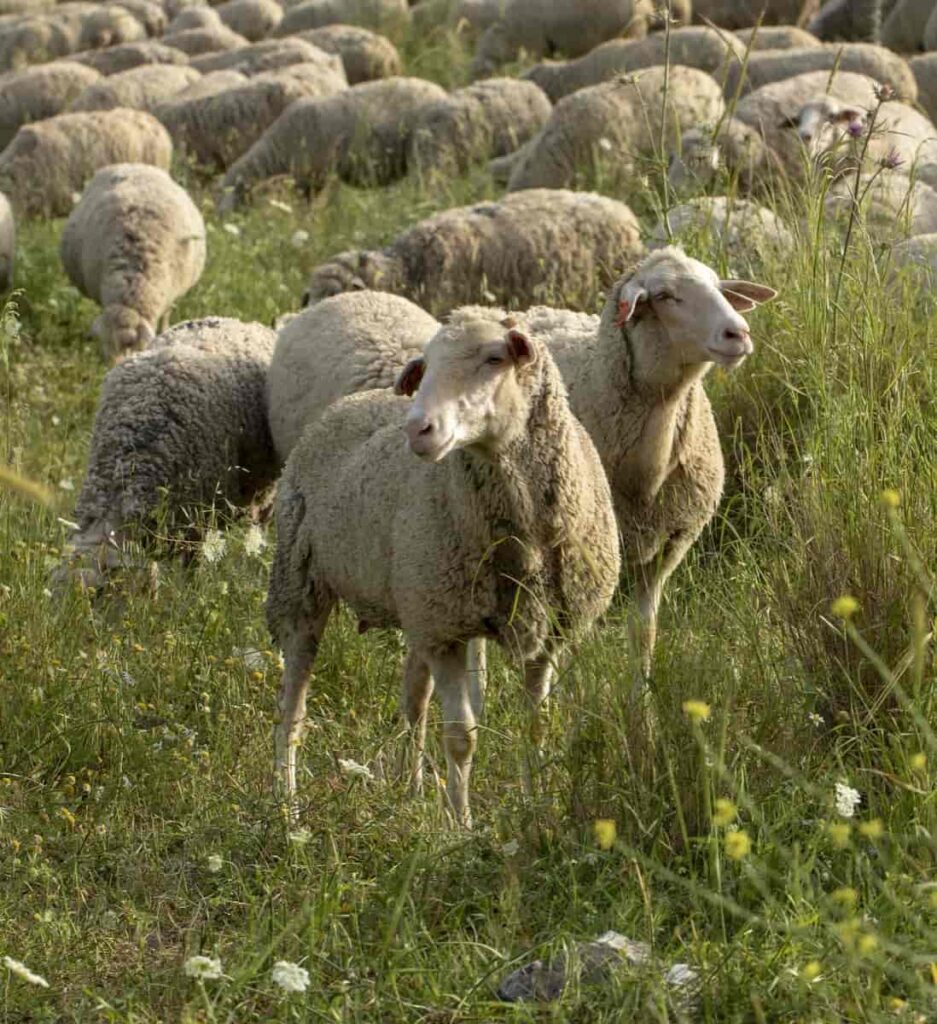
Sheep breeds in Kenya
Sheep farming in Kenya is divided into dry land and wetland. Dry-land sheep farming occurs on open plains, while wet-land sheep farming occurs along rivers or in swampy areas. The main sheep breeds in Kenya are Merino, Corriedale, Southdown, Hampshire down, Romney marsh, Dorper, Red Masai, and Somali sheep. Sheep mainly fall into four broad categories: mutton, wool, dairy, and dual purpose: e.g., mutton and wool or mutton and milk.
- Hair Sheep breeds include Dorper, Persian Black Head, and Red Masai, and their crosses with local stock.
- Wool and Dual-purpose breeds include Merino, Corriedale, Romney Marsh, and crosses of these breeds with local stock.
Sheep farming problems in Kenya
- Sheep farming is an important sector in Kenya, providing food and income for farmers and their families. However, several sheep farming problems in Kenya need to be addressed.
- Some of Kenya’s most common sheep farming problems include overgrazing, competition from other livestock industries, disease and parasite outbreaks, and lack of access to water. Overgrazing is a major problem in Kenyan sheep farming because it causes the loss of valuable grasslands and erosion and desertification. This can cause a decline in the stock size of sheep, a decline in wool production, and increased susceptibility to disease and parasites.
- Competition from other livestock industries also poses a major challenge for Kenyan sheep farmers. Dairy cattle, pig farms, chicken farms, and goat herds compete for space on grazing lands, leading to reduced yields for sheep farmers. Additionally, these other industries emit large amounts of pollutants that can adversely affect the health of both sheep and humans.
- Disease and parasite outbreaks are also common problems in Kenyan sheep farming. For example, Newcastle Disease is a severe viral illness that affects lambs’ muscles and can be deadly if not treated promptly. In addition, parasites such as lice can also be harmful to sheep farmers’ livelihoods.
- Lack of access to clean water is another major challenge Kenyan sheep farmers face. Many areas where sheep are raised do not have access to reliable water sources due to drought or pollution.
Sheep farming loans in Kenya
Kenya has many sheep farming loans as the country is rich in pastureland and has a long history of raising sheep. Sheep farming loans can purchase land, build fences and other essential equipment, and cover initial start-up costs. In addition, many lenders offer deferment or interest-free options for some time, making it an attractive investment for those looking to enter the sector.
Challenges in sheep farming in Kenya
In Kenya, sheep farming is a traditional and important sector contributes significantly to the country’s economy. However, there are some challenges that the sector faces. These include lack of access to land, water shortages, and pests and diseases. In addition, competition from other livestock production activities has caused prices for wool and lamb exports to decline in recent years. Nevertheless, sheep farming has been a significant part of Kenyan agriculture for centuries.
However, recent challenges face the sector, which includes increasing competition from other agricultural activities and a decreasing population of sheep. The main challenges of sheep farming in Kenya include high disease prevalence, a lack of land, and water availability. The high disease prevalence is due to the proximity of domesticated goats and pigs, which spread diseases to sheep. Sheep also suffer from parasites and external injuries from competing with goats and pigs for resources.
In case you missed it: Sheep Farm Insurance in India, Companies, Policy, and Premium
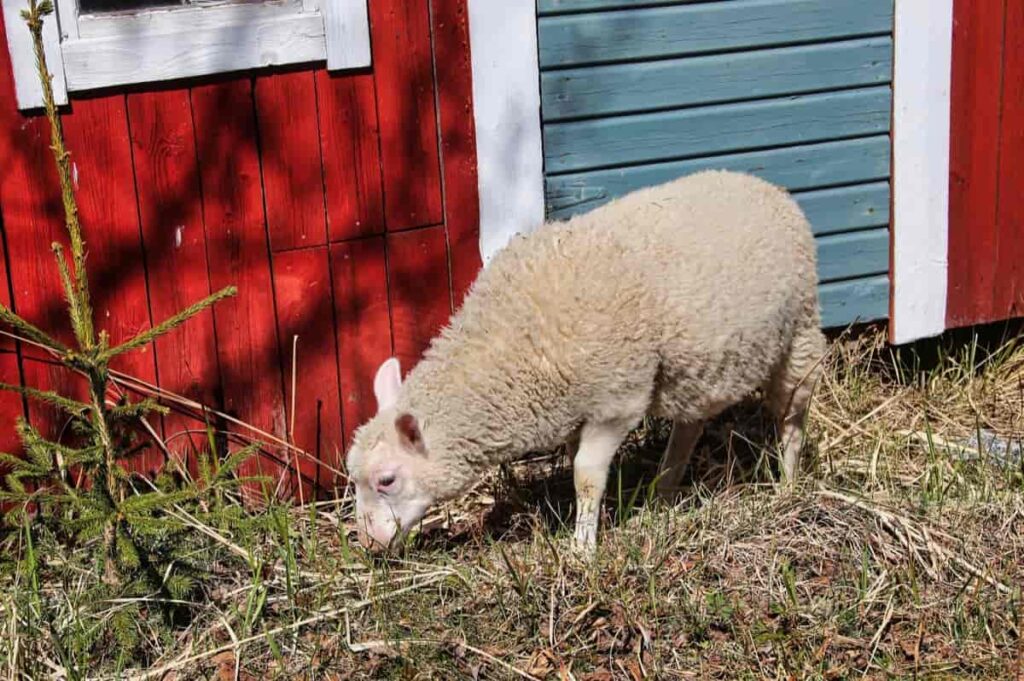
The lack of land is a problem because the traditional method of grazing sheep on long grasses does not work well in Kenyan climates. In addition, water is scarce in some parts of Kenya, which can challenge sheep farmers. The government is encouraging sheep farming through subsidies and other support measures, but these have not been enough to offset the challenges faced by the sector. There are also concerns about animal welfare in sheep farms. In addition, climate change is expected to impact agriculture in Kenya, including sheep farming.
Conclusion
Sheep farming is one of Kenya’s oldest and most traditional agricultural practices. Sheep farming is Kenya’s pre-dominant agricultural activity, accounting for nearly 50 percent of the country’s GDP. The largest market for Kenyan sheep products is Europe, followed by the United States. To raise sheep successfully in Kenya, farmers need good pastureland and access to water. They also need a reliable electric power source, including fences and shearing machines, to run their equipment.
- How to Make Houseplants Bushy: Effective Tips and Ideas
- Innovative Strategies for Boosting Coconut Pollination and Yield
- Pollination Strategies for Maximum Pumpkin Yield
- The Complete Guide to Chicken Fattening: Strategies for Maximum Growth
- Natural Solutions for Tulip Problems: 100% Effective Remedies for Leaf and Bulb-Related Issues
- Revolutionizing Citrus Preservation: Towards a Healthier, Greener Future
- Natural Solutions for Peony Leaf and Flower Problems: 100% Effective Remedies
- Maximizing Profits with Avocado Contract Farming in India: A Comprehensive Guide
- Natural Solutions for Hydrangea Problems: 100% Effective Remedies for Leaf and Flowers
- The Ultimate Guide to Choosing the Perfect Foliage Friend: Bringing Life Indoors
- From Sunlight to Sustainability: 15 Ways to Use Solar Technology in Agriculture
- The Ultimate Guide to Dong Tao Chicken: Exploring from History to Raising
- The Eco-Friendly Makeover: How to Convert Your Unused Swimming Pool into a Fish Pond
- Mastering the Art of Delaware Chicken Farming: Essentials for Healthy Backyard Flocks
- 20 Best Homemade Fertilizers for Money Plant: DIY Recipes and Application Methods
- How to Craft a Comprehensive Free-Range Chicken Farming Business Plan
- Brighten Your Flock: Raising Easter Egger Chickens for Beauty and Bounty
- How to Optimize Your Poultry Egg Farm Business Plan with These Strategies
- Subsidy for Spirulina Cultivation: How Indian Government Schemes Encouraging Spirulina Farmers
- Ultimate Guide to Raising Dominique Chickens: Breeding, Feeding, Egg-Production, and Care
- Mastering the Art of Raising Jersey Giant Chickens: Care, Feeding, and More
- Ultimate Guide to Raising Legbar Chickens: Breeding, Farming Practices, Diet, Egg-Production
- How to Raise Welsummer Chickens: A Comprehensive Guide for Beginners
- How to Protect Indoor Plants in Winter: A Comprehensive Guide
- Ultimate Guide to Grow Bag Gardening: Tips, Tricks, and Planting Ideas for Urban Gardeners
- Guide to Lotus Cultivation: How to Propagate, Plant, Grow, Care, Cost, and Profit
- Agriculture Drone Subsidy Scheme: Government Kisan Subsidy, License, and How to Apply Online
- Ultimate Guide to Raising Araucana Chickens: Breed Profile, Farming Economics, Diet, and Care
- Bringing Hydroponics to Classroom: Importance, Benefits of Learning for School Students
- Ultimate Guide to Raising Polish Chickens: Breed Profile, Farming Economics, Diet, and Care
- Ultimate Guide to Raising Australorp Chickens: Profile, Farming Economics, Egg Production, Diet, and Care
- Silkie Chicken Farming: Raising Practices, Varieties, Egg Production, Diet, and Care
- Sussex Chicken Farming: Raising Practices, Varieties, Egg Production, Diet and Care
- Homemade Feed Formulations for Livestock: Discover Cost-effective Starter to Finisher Feed Recipes
- 20 Best Pig Weight Gain Supplements: Top Swine Weight Gain Formulas
- Ultimate Guide to Elderberry Farming: Propagation, Planting, Yield, Cost, and Profit